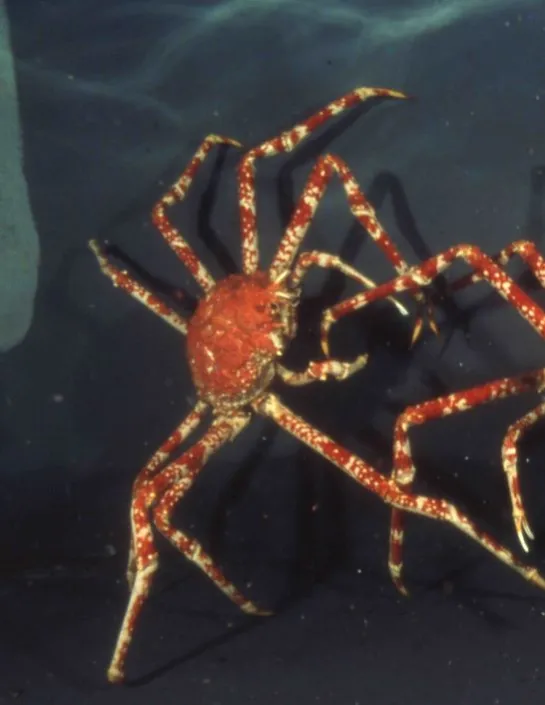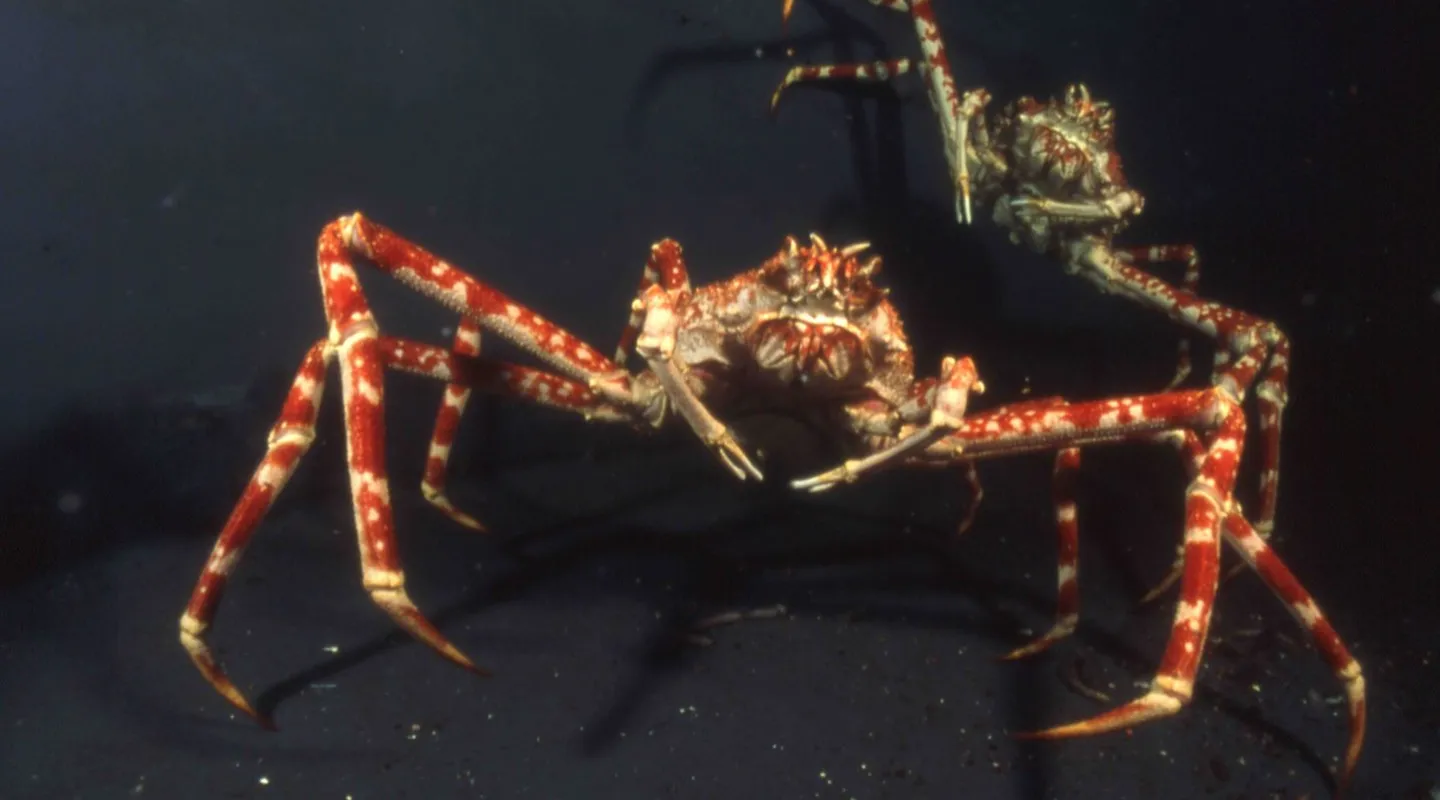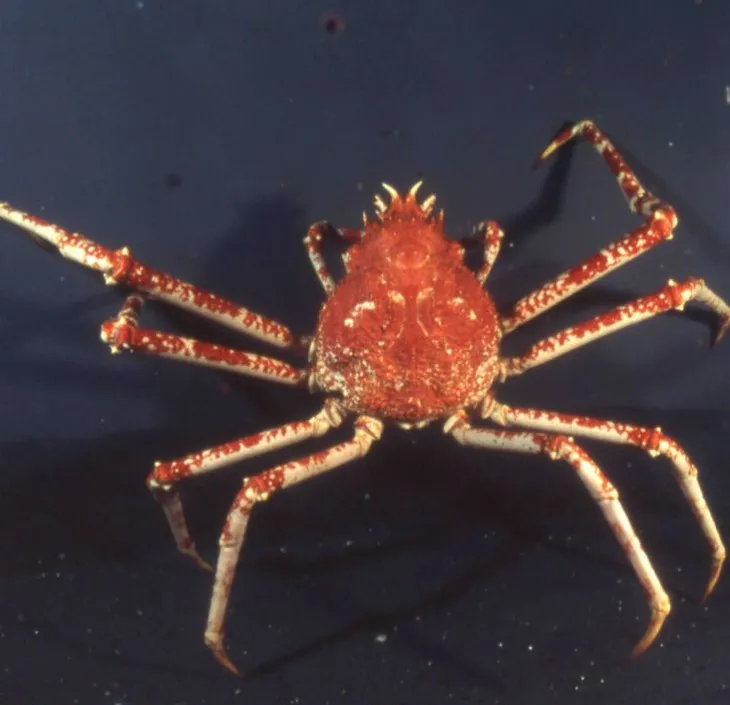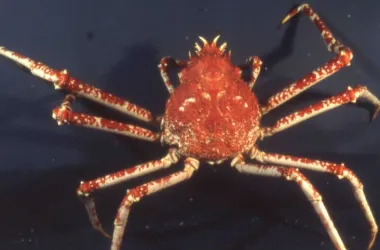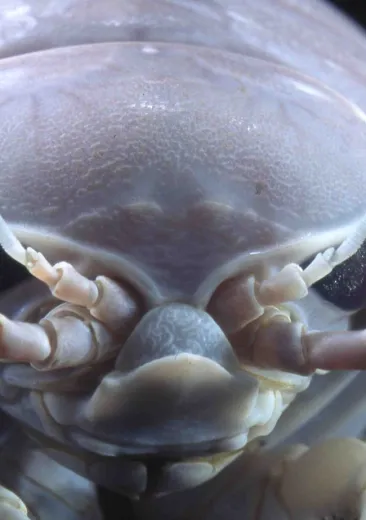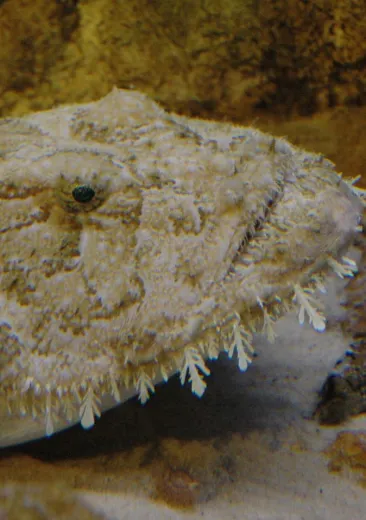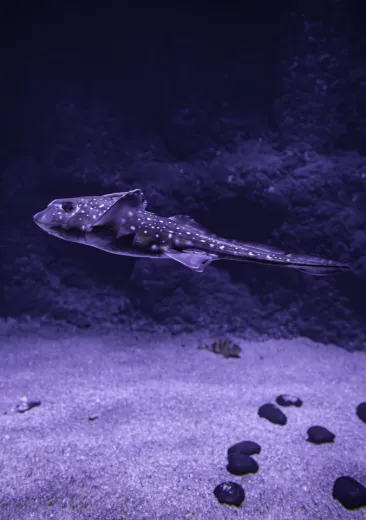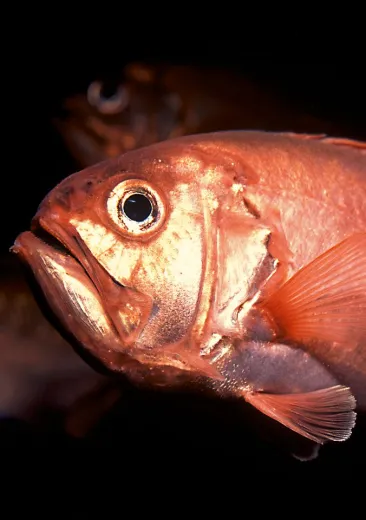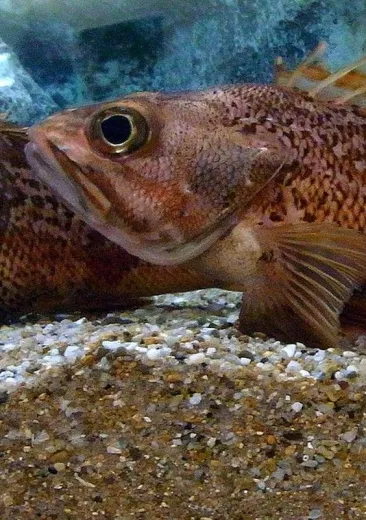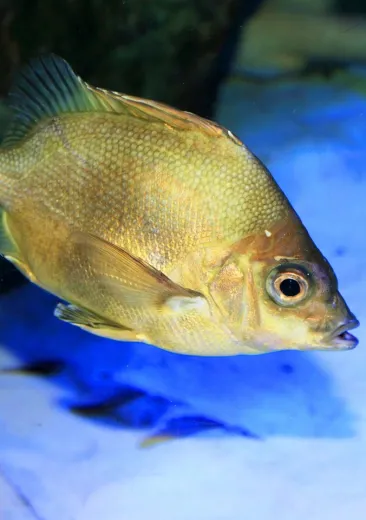The giant spider crab or giant spider is mentioned by Jules Verne in Twenty Thousand Leagues Under the Sea. (Chapter 17: An Underwater Forest). “A few paces away, a monstrous, metre-high sea spider was staring at me with beady eyes, poised to spring at me “
Where can you find them?
The Japanese spider crab lives in the Pacific Ocean, in the waters off Japan, at depths of up to 600 m. During the breeding season, between January and April, the crabs move up closer to the surface, to a depth of about 50 metres. The young crabs stay in these waters before descending to live at greater depths on reaching adulthood.
How can you recognise them?
- They have a triangular-shaped carapace.
- Their body and legs are a reddish-orange colour with white spots.
- Their legs can reach a length of 1.50 m.
- They have ten legs, two of which terminate with claws, the chelipeds. The males’ legs are longer than those of the females.
- They can live up to an age of 100 years.
- The females’ abdomen is broader, so they can carry their eggs.
- After mating, the female can produce one million eggs, but only a few survive.
What is distinctive about them?
This seabed scavenger is quick to feast on the remains of food or dead animals that fall from above. It is known that they can sometimes prise open molluscs, tear and eat living algae and catch small marine invertebrates.
In order to blend into their surroundings and escape from their predators, spider crabs can drape themselves with sea anemones, algae and sponges. It is mainly juveniles that use this technique; the adults’ size is sufficient to dissuade any predators.
Like all crustaceans, should a spider crab lose one of its legs, it can grow back again at the time of moulting. It is more vulnerable to predators just after moulting, that is to say after the loss of its exoskeleton and before its new carapace has hardened.
Threats and protective measures
Considered to be a delicacy, the spider crab is consumed in Japan. It is not permitted to fish for them during the breeding season to allow their numbers to increase.
The increase in the temperature of the oceans owing to climate change could have a negative impact on the number of larvae that survive and reach adulthood; it deteriorates the seaweed beds, which could reduce the amount of food that falls to the seabed where the crabs live.
